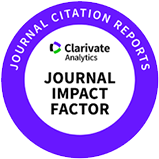Review
The Use of Metabolomics Approach in The Combination With Multivariate Data Analysis For The Identification of Non-Halal Meats: A Narrative Review
Abdul Rohman1,2,*, Vevi Maritha3, Anjar Windarsih4, Muhammad Jefriyanto Budikafa5, Florentinus Dika Octa Riswanto6, Muhammad Abdurrahman Munir7, Halida Rahmania1,2
Author Information & Copyright ▼
1Center for Excellence Institute for Halal Industry and Systems (IHIS), Universitas Gadjah Mada, Yogyakarta 55281, Indonesia.
2Department of Pharmaceutical Chemistry, Faculty of Pharmacy, Universitas Gadjah Mada, Yogyakarta 55281, Indonesia.
3Pharmacy Study Program, Faculty of Health and Science, Universitas PGRI Madiun, 63118 Madiun, Indonesia.
4Research Center for Food Technology and Processing (PRTPP), National Research and Innovation Agency (BRIN), Yogyakarta 55861, Indonesia.
5Faculty of Islamic Economics and Business, State Islamic University Prof. K. H. Saifuddin Zuhri, Purwokerto 53126, Indonesia.
6Department of Pharmacy, Faculty of Pharmacy, Sanata Dharma University, Campus III Paingan, Maguwoharjo, Depok, Sleman, Yogyakarta 55282, Indonesia.
7Department of Chemistry, Faculty of Resource Science and Technology Universiti Malaysia Sarawak, Kota Samarahan, Sarawak 94300, Malaysia.
© Copyright 2025 Korean Society for Food Science of Animal Resources. This is an Open-Access article distributed under the terms of the
Creative Commons Attribution Non-Commercial License (http://creativecommons.org/licenses/by-nc/3.0/) which permits
unrestricted non-commercial use, distribution, and reproduction in any
medium, provided the original work is properly cited.
Received: Apr 14, 2025 ; Revised: May 07, 2025 ; Accepted: Jun 04, 2025
Published Online: Jun 11, 2025
Abstract
There are three issues in relation to halal products namely raw materials, processes, and halal authentication analysis. One of the issues encountered in raw materials is meat origins which can be obtained either form its sources (halal and non-halal meats) or due to slaughtering processes (Zabiha and non-zabiha), therefore, some scientist tried to develop analytical methods capable of discriminating the types of halal and non-halal meats due to its sources and its slaughtering processes. Three approaches have been introduced for the identification and quantification of non-halal meats, namely identification of specific markers, profiling using fingerprinting tools and metabolomics studies. Differentiation of halal and non-halal meats from the perspectives of its sources and slaughtering processes are very challenging. This review highlighted the application of analytical methods based on metabolomics approaches in combination with chemometrics for differentiation of halal and non-halal meats from its sources such as rat meat, pork, canine meats, and from the slaughtering processes in terms of Zabiha and non-zabiha procedures.
Keywords: non-halal meats; metabolomics; Chemometrics; halal slaughtering process; halal confirmation













